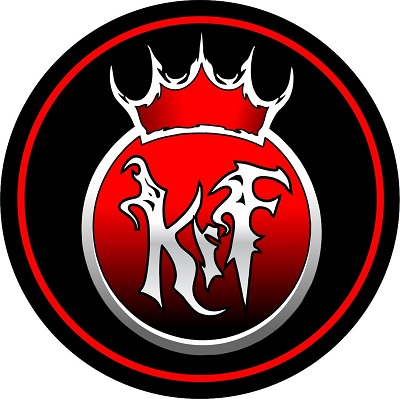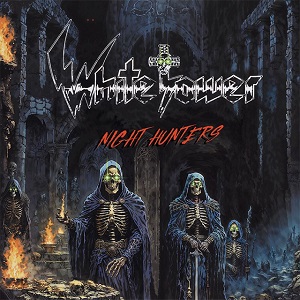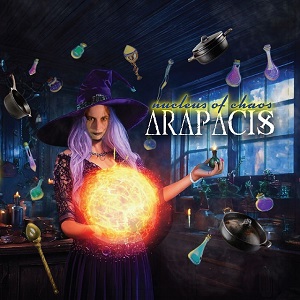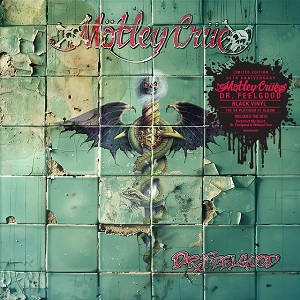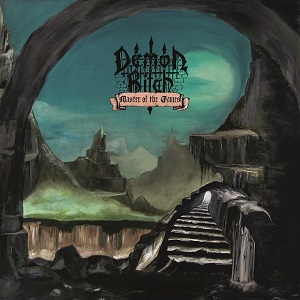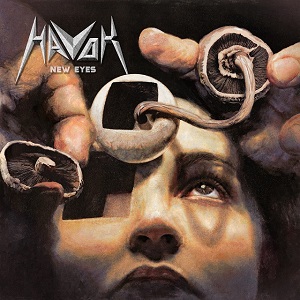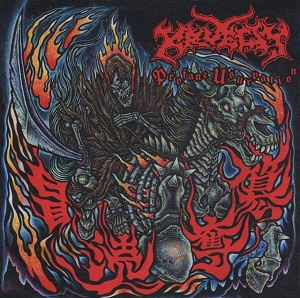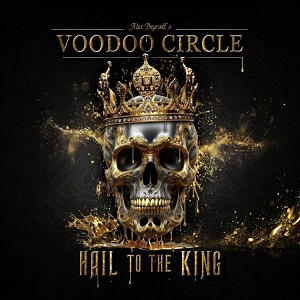THE DEAD DAISIES – “We Actually Did Two Records”
September 4, 2024, 3 months ago

“I’ve never been in a band that produces music, like writing and getting it out, faster than The Dead Daisies,” begins vocalist John Corabi. The Dead Daisies – comprised of Corabi, along with guitarists Doug Aldrich and David Lowy, bassist Michael Devin, and drummer Tommy Clufetos – release their new album, Light ‘Em Up on September 6th.
Light ‘Em Up begins with the title track, which serves as a great introduction to the album. This song is a fun, straight-ahead rocker, and obvious choice for first single. But then, with “Times Are Changing” and “I Wanna Be Your Bitch”, The Dead Daisies prove they’re not messing around!
“‘Times Are Changing’ was kind of a finished song already, but most of the stuff is usually just riffs,” recalls Corabi. “Then we get together and write, record, mix, master. We do the album artwork – it’s all done in less than a month. We went into the studio; we had a bunch of ideas. ‘Times Are Changing’ was pretty much done, and ‘Love That’ll Never Be’ was pretty much done. We did dissect it a little bit. But the rest of the record was all brand new stuff. We just kind of built it, put it together, and went from there. We did this record in 19 days or some sh*t. We don’t think about it, we just – ‘I like this idea, let’s jam on this.’ We jam on it, we put it together. I write the lyrics, I sing it. We put it to bed. We had no idea how the record was going to come out until we were done. And I think it came together beautifully.”
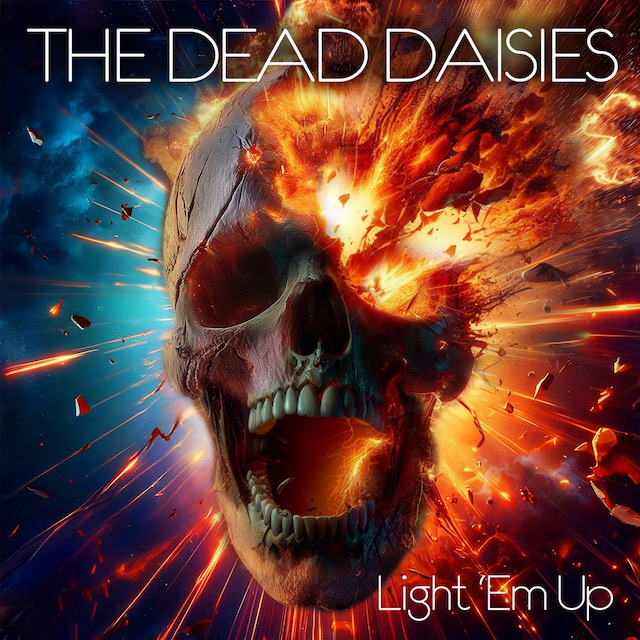
The predominance of Corabi’s vocal in “Times Are Changing” is beyond cool. The verses are almost scat-like, however the song absolutely has bona fide lyrics. In fact, it’s reminiscent of Steven Tyler from Aerosmith. “It’s really funny because at this point in my life, I’m 65 years old, I grew up listening to Aerosmith, listening to Zeppelin. At one point, I was actually in an Aerosmith tribute band. I think it’s an east coast thing. My wife says it all the time, she goes, ‘Your sense of humor.’ She’ll watch a movie with Mark Wahlberg, or somebody from New York. She’s like, ‘the sense of humor of Philly, New York, Boston – the slangs, it’s so weird; but in a good way.’ I think at this point, I’ve got, I don’t want to say my own thing, I sound the way I sound, but there is some occasional mannerisms that I’ve just kind of picked up and I guess stored away for a rainy day, from way back in the day when I was in an Aerosmith tribute band. So, I’ll take that as a compliment.”
“I Wanna Be Your Bitch” is irresistible. The hooks are huge, the chorus is fantastic. Was there a specific woman who inspired those lyrics? Cause it’s certainly a story! “You know what, I laugh about it, and I talk about it on stage,” says Corabi. “I think any of us, at some point, have been in a situation where – and it can go the other way too, even for women. It’s like, your partner does something that f*cking pisses you off, or just sets you off. You’re freaking out, then they step out of the shower and drop their towel to put their panties on, and you forget what you were mad about. Or it’s like, you’re so angry. You know this person isn’t the right person for you. But, without being crude, they can suck a bowling ball through a garden hose. We used to call it, ‘thinking with the wrong head.’ So, we tried to paint a picture, a little tongue in cheek, have fun with it, where the chic’s like, ‘I want to fly in a private jet, I want the caviar, I want the champagne, I want the Gucci bag,’ blah, blah, blah. You’re like, ‘Oh my God! She’s driving me f*cking crazy, but she’s f*cking the shit out of me so I’m gonna let it all go for now. Take what you want.’”
Light ‘Em Up was created and recorded in two different locations – Fame Studios in Muscle Shoals, Alabama and Sienna Studios in Nashville, Tennessee. “It seems odd, but we actually got a lot accomplished at both places,” admits Corabi. “We started rehearsing and putting these ideas together in Nashville. Then, I think it was a bucket list thing for all of us, management included, to go down to Muscle Shoals and see what it was all about. We booked some time down there. We only went down there for maybe ten days. But we also did some writing and recording there in the earlier part of the day. Then about five or six o’clock when we were down there, our manager, or Marti (Frederiksen, producer) would walk through the room with bottles of wine, whiskey, or whatever was on board that night, and we just started jamming. To be honest with you, we actually did two records in this time frame. We actually finished writing and recording Light ‘Em Up, and then we also, because of our trip to Muscle Shoals – call it the mojo, the vibe, whatever – we were so inspired by it that we actually recorded a blues record as well.” Of covers? “Yeah. We did classic blues songs like some old Robert Johnson, Willie Dixon, Muddy Waters. We did ten or eleven songs. We recorded ‘em, they’re in the can, mixed, mastered, ready to go. It was just something fun for us to do.”
“Now, the thing that was weird about this. We went to the first studio, called Fame, that was the one that got the swampers, and that Lynyrd Skynyrd talks about in ‘Sweet Home Alabama’. So, that’s where it all started. But the funny thing is, Marti’s studio, there’s kind of a… part of the lineage is, Fame Studios was the first. Then a couple of the swampers left and started another studio across town on Jackson Highway. That one became equally as famous, and busy. So, a couple of those guys left and went to Nashville and started a studio in the ‘70s; I guess it was called Quad. Well, when Marti moved to Nashville, he bought that studio. So, Sienna is actually the third studio in that lineage of the Muscle Shoals sound. The room that we used at Marti’s was the same room that Neil Young recorded Harvest in. It was kind of like this crazy museum tour; we were just vibing out on the whole thing. So, we did Light ‘Em Up, and we did a blues record. We were pretty stoked about it! It was a lot of fun. We had a blast doing these two records, it was insane!”
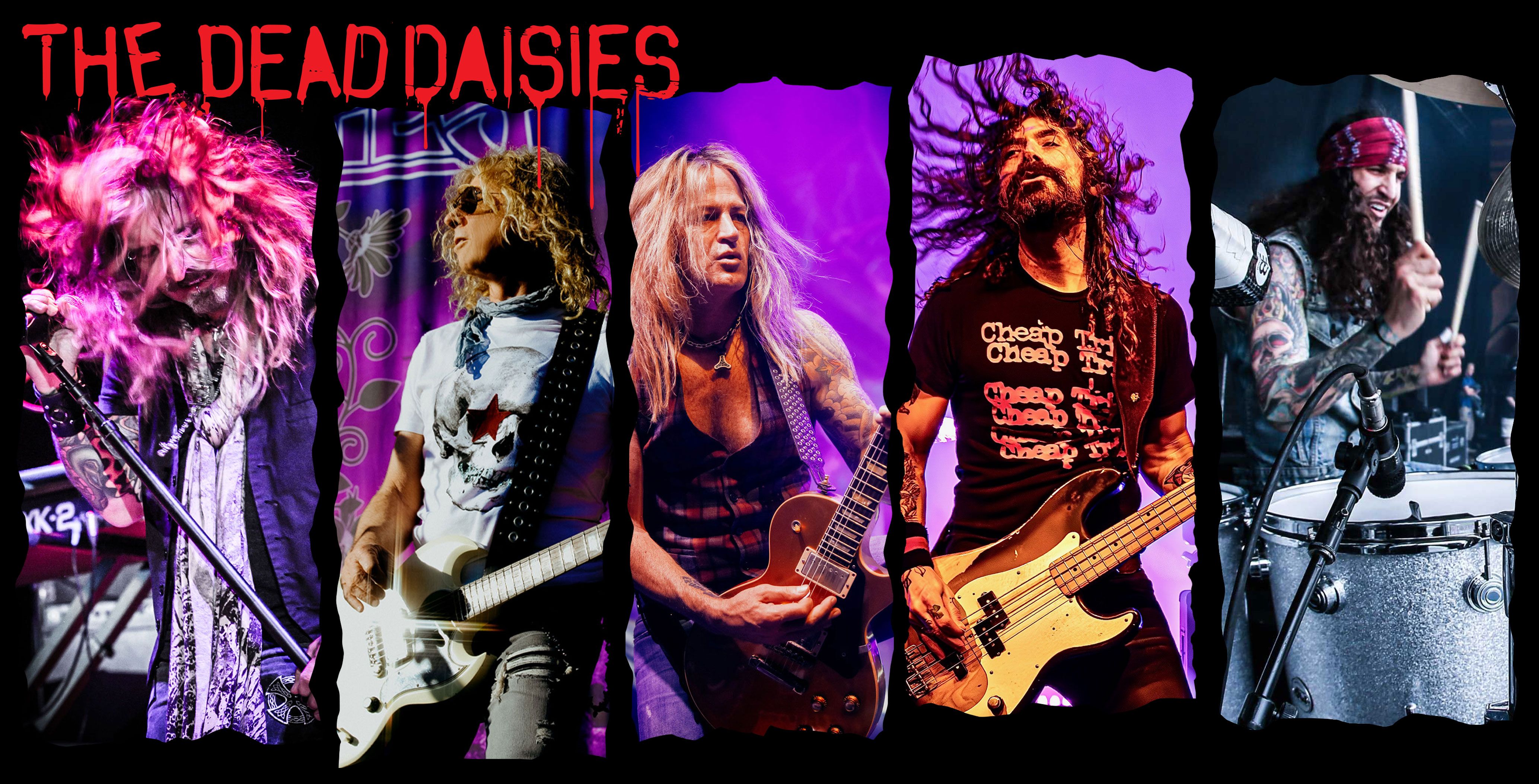
Evan Frederiksen, the son of producer Marti Frederiksen, played drums on Light ‘Em Up, the whole album. “Pretty much, yeah. That was… obviously there was something with Brian (Tichy, drummer)’s schedule. We were supposed to go in; I don’t know what happened. Something scheduling wise, the manager and Brian had a talk. He had some shows with Gene Simmons, he plays with Don Felder as well. There was going to be some scheduling things. So, we actually just started in the studio. We showed up and we’re like, ‘Where’s Brian?’ He was like, ‘Oh, he couldn’t make it.’ So, we actually started working on songs, and Evan was engineering with Marti. While we were working on the songs, Marti goes, ‘Hey Evan, why don’t you just keep time for the guys.’ My son also plays as well. We were like, ‘Ah, we’ll get through it. We’ll just keep time.’ We were going to map the songs out. But we started out with these tunes and we’re listening back to them going, ‘I don’t think we need to re-record these with another drummer. It f*cking sounds great!’ So, Evan played on everything. And I think he did a great job. But he’s got this weird telepathy thing going on with his dad too. His dad’ll just look at him and Evan knows what to do.”
As is tradition with The Dead Daisies, the new album contains a cover song. But it’s not a cover song that a lot of people will be familiar with. Quite a few fans will think it’s an original, as Australian rock band The Angels are not well-known in North America. Furthermore, the song itself, “Take A Long Line”, was originally released in 1978. “Actually, David (Lowy, guitarist) used to play in a band with Doc Neeson (vocalist for The Angels). David brought it to the table,” explains Corabi. “I’ve got to be honest with you, I’d never even heard the f*cking song. We listened to it. The original version, Doc was brilliant on that. But it was weird. I was like, ‘Okay, it’s a little lower vocally for me.’ So, we took the key up, we moved it up so I could sing it a little more… almost like Steven Tyler with ‘Let The Music Do The Talking’. More rapid fire. It’s funny, I’d never heard the song. We recorded it, I was telling my wife about it, and then all of a sudden, we’re sitting there watching some movie about these people that are out on something in Australia; they’re on a boat and they’re doing these river tours, and this 800-foot alligator is just terrorizing everybody. These two guys come down the river on a boat, and they’re listening to the original Doc Neeson / Angels song ‘Take A Long Line’. I go, ‘Oh, shit! That’s that song.’ But I literally heard it in two or three different movies. I’m like, ‘Okay, I was either completely clueless…’. Apparently, a lot of people never heard of The Angels. But we’ve been getting great feedback on it. We started playing it live, and then I was looking out in the audience, there was quite a few people that were singing the chorus. So, somebody remembers it. I just never heard it.”
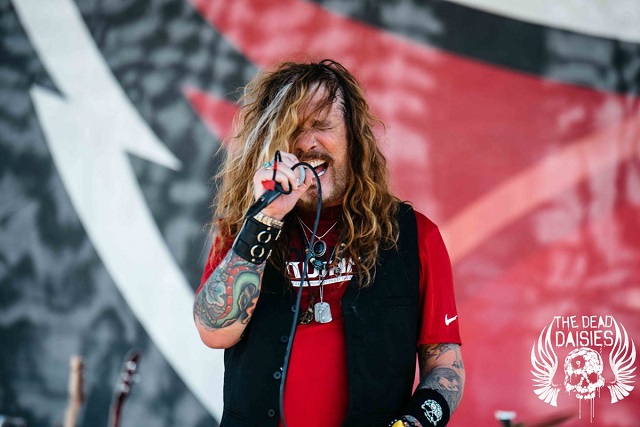
The Dead Daisies guitarist Doug Aldrich has described “Love That’ll Never Be” as, “A great ballad… one of the best songs Corabi’s ever written.” According to John, “Marti and I, when I was kind of out of the band, I had started writing and I was recording myself here at the house. With Marti, I wrote ‘Love That’ll Never Be’. When we initially did it, it was a little more… I don’t want to say polished; it was a little more intricate. When we actually listened to it – I played it for The Daisies cause I hadn’t released it yet, and everybody loved the song. But there was more to it, there was some other parts in the song. Marti and I sat and listened to it… and we’re like, ‘It sounds something more like what Elton John would do, not The Dead Daisies.’ So, we dissected the song. We just literally sat in a room and played it, tried some open tunings, tried some different things, let Doug do his thing on it. And we wound up pulling a couple parts out of the song to make it more streamlined and direct. But I think now it sounds like The Daisies.
"It’s just one of those things. I have had an ex, or two, come back years later and go, ‘You know what? I kind of messed up. I didn’t think you and I would work, but after checking out the dating pool, I realized you were pretty f*cking awesome.’ Sometimes people think the grass is greener on the other side of the fence, and they dip their toes over there. But then they can’t go back, and they realize they made a mistake. This is what the song’s about – a girl that realizes she probably f*cked up. There was a line in there that Marti loved, ‘They say time heals everything, except the goodbyes.’ There’s always the one that got away.”
“Take My Soul” offers a dramatic ending to a terrific album. With the sound effects at the beginning of the song, it almost becomes cinematic. The listener creates visuals in their own mind to accompany the music. “That one really morphed. When we were actually trying to do the blues record, without sounding redundant or ridiculous, when we did the blues stuff, we tried to do it in a manner like, a blues purist is probably not going to like what we did because it’s like, ‘They’re not using traditional amps.’ We tried to sit down and ask ourselves with each song, what would Zeppelin do? If you listen to ‘How Many More Times’ or ‘You Shook Me’, some of those blues standards they did, even ‘When The Levee Breaks’. If you listen to the original, and what Zeppelin did, it doesn’t even sound the same, but it’s there. So, we actually started working on a song called ‘Terraplane Blues’ (by Robert Johnson). We kept playing around with it, taking parts out and adding things. It wound up being… after we sat and listened to it, this doesn’t even sound like a blues song. So, we pushed it to the side. But we liked the music. Marti and I were listening to it – ‘Let’s put this on the original record.’ Let’s rob Peter to pay Paul.”
“We basically took what started out as ‘Terraplane Blues’ and we totally f*cked with it so much that we said, ‘Alright, let’s put it on the original record.’ It’s completely original, there’s nothing ‘Terraplane Blues’ about that song at all. Then the more I listened to it, I was sitting there thinking, when I write lyrics, I literally close my eyes and listen to the music, and I start seeing things almost like a vignette, like a storyboard of a movie. I was just sitting there, and initially I thought – Vikings conquering, like rowing a boat. I’m like, ‘Nope, it’s been done. Zeppelin did that on ‘The Immigrant Song’. Then I went away, and I was having some lunch, and I kept thinking about the song. You know what? Chain gang. Guys just swinging the pickaxe, in rhythm. So, I made up this story about two guys who fight over a girl, and one kills the other. He’s got to spend the rest of his life on a chain gang pounding rocks. He’s kind of like, ‘I know I did wrong, but Lord please take me now, cause I do not want to spend the rest of my life pounding on a rock.’ I just kind of created this story. Marti was like, ‘Dude, that’s f*cking great!’ Again, when I’m singing, I’m still changing lyrics as we go. It’s funny, it wound up being one of my wife’s favorite songs on the record. She goes, ‘I f*cking love that song. It’s so awesome.’”
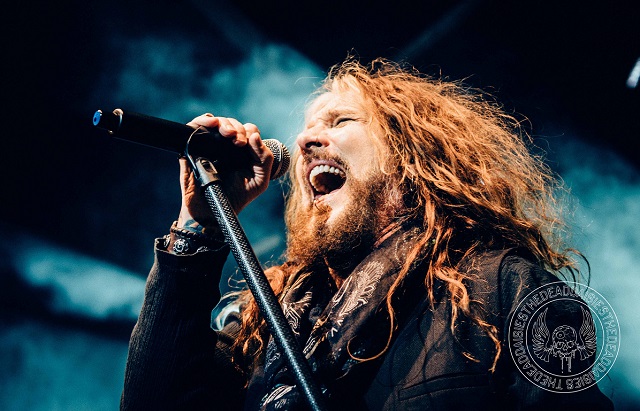
“I’m Gonna Ride” is very much a motorcycle song. Corabi shares his most memorable ride. “I would have to say… actually, I played Sturgis with Mötley. We had all of our bikes shipped out there. We got there a couple days ahead of time, before we were supposed to play. I got to experience a little bit of the vibe of Sturgis. Tommy (Lee, drummer) and I spent the day, we went up to Mount Rushmore, and then we rode back with a bunch of different cats; people we didn’t even know. Then we hit, I believe the town was called Keystone, and we just sat in a bar eating pizza and drinking beer with all these cats from all over the world. I think that was probably one of my most memorable days riding a bike. Just checking out Mount Rushmore and hanging with people, being a part of the Sturgis experience. It’s awesome.”

